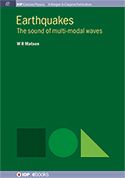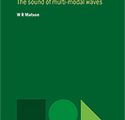Popis
This book is an introduction to wave dynamics as they apply to earthquakes, among the scariest, most unpredictable, and deadliest natural phenomena on Earth. Since studying seismic activity is essentially a study of wave dynamics, this text starts with a discussion of types and representations, including wave-generation mechanics, superposition, and spectral analysis. Simple harmonic motion is used to analyze the mechanisms of wave propagation, and driven and damped systems are used to model the decay rates of various modal frequencies in different media.
Direct correlation to earthquakes in California, Mexico, and Japan is used to illustrate key issues, and actual data from an event in California is presented and analyzed. Our Earth is a dynamic and changing planet, and seismic activity is the result. Hundreds of waves at different frequencies, modes, and amplitudes travel through a variety of different media, from solid rock to molten metals. Each media responds differently to each mode; consequently the result is an enormously complicated dynamic behavior. Earthquakes should serve well as a complimentary text for an upper-school course covering waves and wave mechanics, including sound and acoustics and basic geology. The mathematical requirement includes trigonometry and series summations, which should be accessible to most upper-school and college students. Animation, sound files, and videos help illustrate major topics.
Copyright © 2016 Morgan & Claypool Publishers
Online ISBN: 978-1-6817-4329-5 • Print ISBN: 978-1-6817-4328-8
Author
W R Matson
Published
June 2016








